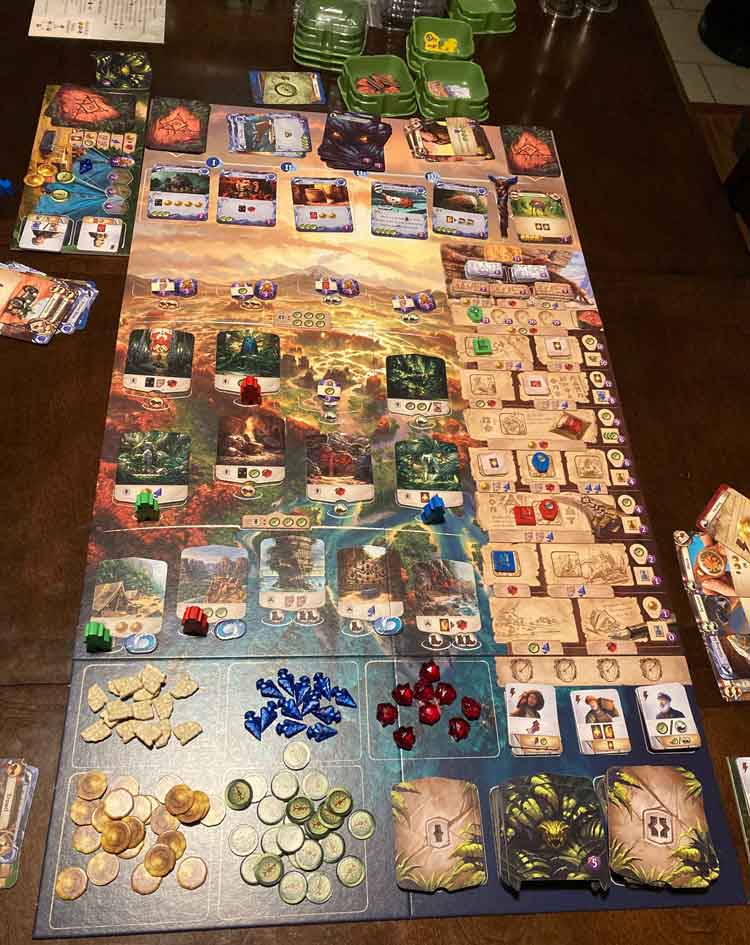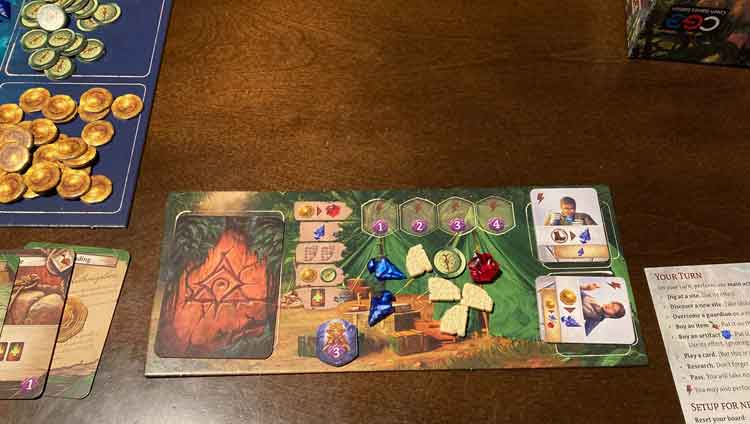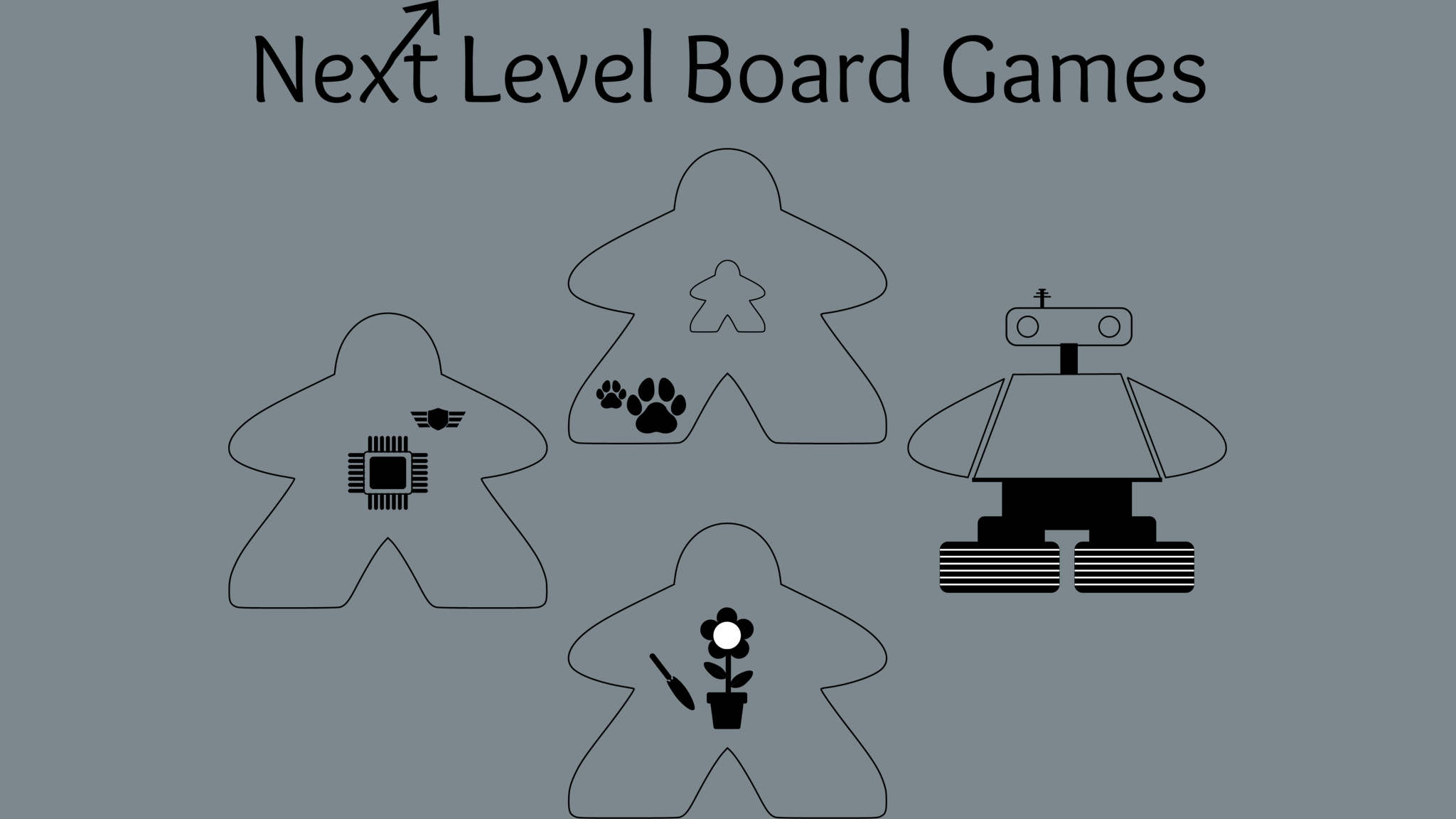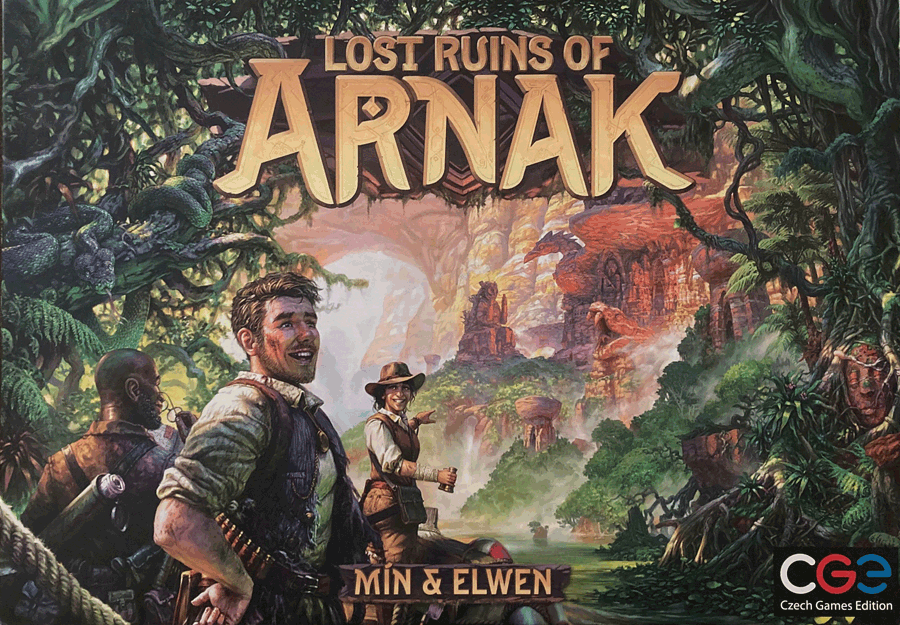Lost Ruins of Arnak is a game published by Czech Games Edition (CGE). The premise of the game is for players to take on the role of adventurers leading an expedition group across an uncharted island. Along the way players will search jungles for artifacts, fight the guardians keeping watch over those sites, all while researching the ruins hoping to discover the Lost Temple. At the end of five rounds the player with the most points, which can be acquired in many ways, is declared the winner.
This post is broken into the following 3 sections, feel free to jump directly to one:
- General summary - consisting of information about overall enjoyment, theme, replayability, and upgrades
- Complexity - consisting of information about the rulebook, setup, player turns, and overall learning curve
- Player turns - consisting of game type, game flow, rule you are likely to miss, and favorite aspect
General Summary
Number of players we had: 3
Our play time (not including setup): 1 hour 50 minutes
Overall enjoyment

Lost Ruins of Arnak is a game everyone in our group agreed they enjoyed everything about playing the game. There are aspects of the game play that may remind you of other games, but there are also several unique aspects that make it different, challenging and fun. One of the most unique things is that even though each player has a unique deck of player cards, they can still take turns even after using all their cards or placing both archeologists. This is because there are other available actions that do not require cards or workers to be placed.
Another unique features is that at the end of each round the cards each player used that round are shuffled by themselves before being added to the bottom of the deck. Most games with a deck building aspect have players draw their hand at the beginning of each round and all the cards in the deck are used before all discards are shuffled together to create the new deck. Lost Ruins of Arnak gets newly acquired item cards into your hand faster because when players buy them they are immediately placed on the bottom of their current deck.
Lost Ruins of Arnak is played over five rounds. At the beginning of each round players begin with five cards and two archeologists to use. Cards can be used to gain a benefit/resource or to place an archeologist in the corresponding type of location. On their turn, players take one main action and an unlimited amount of free actions until they cannot or do not want to take any more actions.
Purchasing item and artifact cards to build up their unique player deck, as well as adding assistants by moving up the research track, helps players get more accomplished each round. This is especially true when players plan their main actions to best take advantage of resources that allow them to take additional actions.
Everything about the game play feels very refined, lacking any places where the game feels disconnected or incongruous. The game board and supply board have nice sized spots for all of the cards and tokens. The player boards are small while having locations for assistants and the player deck. Lastly, the game has areas that are only available based on the number of players so the complexity of the game scales even as the number of players varies.
If we had to pick something that frustrated us it would be that there was no game insert of any sort inside the box. There are numerous pieces and cards and an insert would have been nice.
Theme

The available actions, player boards, double-sided game board, cards, and tokens all contribute to a well-thought-out adventuring theme. There is a large amount of detail in the game box, though you might not notice it at first, but if you stop to look closer you will notice images that are also on some cards and the game board. Some of the tokens are really unique - like the arrowheads and the jewels, which are different than what you find in almost every other game with red gems.
Replayability

There are several things that increase the replayability of this game. These include:
- The game board is two-sided with different requirements for succeeding.
- There are far more artifact and item cards than will likely be used in a single game.
- Idols and research bonus tiles are placed randomly on their respective locations so the benefits will be different at those locations each game.
- When discovering a new site, the top tile is revealed from a random stack of tiles. This means the explorer never knows what benefits will be gained.
- After a new site is discovered a random guardian tile will be revealed. The guardian requires an unknown cost to remove before the end of the round, otherwise the player who discovered the site must gain a fear card.
- Each player has a slightly different approach to gaining points in the game which affects the actions other players have available.
- There are several ways to gain points - buying item and artifact cards, moving up the research track, discovering and exploring the Lost Temple, acquiring idols, defeating guardians, and keeping idol slots empty.
- The number of bonus tiles placed on the research track are dependent upon the number of players.
Upgrades
I do not know of any upgrades available for this game, but there is an expansion coming soon.
Complexity
Rule book
I have to be honest, I have not fully read the rule book. Instead, we watched a game play overview video to setup the game and learn how all of the actions worked. After the video we skimmed the rule book to reinforce some of the more complex parts of the game and then asked any questions that remained. After finding the answers to our questions we played our first game.
Several times throughout our first game we stopped to check a rule, but mostly we were able to just play. One thing that kept the game moving along are the double-sided player aides included with the game. One side discusses a player turn and all possible actions, as well as the end of round process, while the other side explains the many symbols you will see.
I will add there are a lot of symbols with explanations on the back page of the rule book that makes it easier to learn as well. Also, the rule book seemed very organized going through the setup, main actions, round end, scoring, solo mode and using the second side of the game board.
Setup
Though there are several steps to getting ready to play, they are outlined across two pages and none of these steps are overly complex or take very long. A game can be set up in about 10-15 minutes. Several sets of cards, tokens, and tiles are set out in their respective sections. Some pieces are dependent upon the number of players and these are labeled on the board. Once all the different pieces are set up, players collect a player board, matching starting deck and resource tokens, and the starting resources based on the player order. At this point you are ready to start a game.
Turns
At the beginning of each of the five rounds, players draw up five cards from their own player deck. All of the cards, except fear cards, have two possible uses. One use is the travel value, where an archeologist can travel to a location matching the symbol on the card, and the other is an effect. An effect may be a free action, like collecting a basic resource, or it may require the player to play it as their main action to activate the effect.
On their turn, players get to take one of six main actions and an unlimited number of free actions. Main actions include:
- Digging at a site - provides necessary resources.
- Discovering a new site - gives players the icon token on that location which is worth 3 points at game end, a location tile worth unknown resources, and presents the player with a guardian to defeat.
- Overcoming a guardian - when discovering a new site players must defeat the guardian presented by paying the necessary resources before the end of the round or add a fear card to their player deck. Guardians are worth five points at the end of the game and have a special one-use bonus that players can use as a free action at a later time.
- Buying a card - players can purchase item and artifact cards by spending coins or compass tokens. Cards are worth points at the end of the game and often provide benefits that can be used immediately (artifact cards) or when they are in the player's hand for the round (item cards).
- Playing a card - this includes the original player cards as well as item and artifact cards with benefits or actions other than free actions. Playing cards allows players to upgrade tokens, dig at sites, discover new sites and much more.
- Researching - moving up the research track using both research tokens - the magnifying glass and the notebook- provides players with bonus resources, assistants and points at the end of the game.
While other players are taking a turn, remaining players are busy planning their next turns so there is no lag time between turns.
Overall learning curve
The overall learning curve of this game is not as much as it seems when reading the book or watching a video on how to play it. Yes there are lots of actions a player can take on their turn, but it only takes the first round to really understand how everything works together. The hardest part of the learning curve is planning enough moves ahead to be able to best take advantage of all of the different actions players can take in order to make the most of each round.
Player Turns
Play type
The Lost Ruins of Arnak is a symmetrical, card drafting and deck building worker placement adventure game. Additionally, there are aspects of resource management. Players can use resources to move along the research track and take actions even when they no longer have any cards or archeologists left to place. Lastly, players can spend idols to gather resources they are desperate to get to help them accomplish different tasks as needed. For example, this can come in really handy when you have a guardian to defeat, but otherwise lack the resources.

Game flow
Lost Ruins of Arnak is played over five rounds. Players can take as many turns each round as they have the resources for, and as a result, players are able to accomplish more and more each round. Still, the game goes quickly as players strategize about which actions to take to maximize each round when it is not their turn. While this game is not overly complicated to play, it requires a decent amount of planning and strategizing if players want to take full advantage of each round.

Rule you are likely to forget/miss
There are a couple of rules you might forget or miss. First, you must take your one main action for any turn before you can take an unlimited amount of free actions. Second, it costs compasses to discover a new site in addition to having a card that will let you travel there and an archeologist to place there.
Favorite aspect
Our favorite aspect about this game is how many different ways there are to gain points. This means each player can be using a completely different strategy in their efforts to make the most use of each turn in a round. There may also be times when two players are going after the same items, but there are so many other things that can be done that even when this happens, there are almost always other things you can do to make use of your cards, resources, assistants and turns.
Lost Ruins of Arnak is a great choice for player groups looking for a really fun game with some unique rules and lots of strategy without being unnecessarily complex. This game includes some worker placement, resource management, card drafting, and deck building. Lost Ruins of Arnak has lots of replayability including a two-sided game board. The adventurer theme is well executed across the game board, player boards, tokens, tiles, and cards. While this game might feel overwhelming at first, it is not overly complex once you know how to play. This is definitely a game that will be in our regular rotation!


